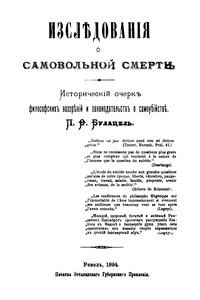В пучине бренного мира. Японское искусство и его коллекционер Сергей Китаев - [71]
Meanwhile, Kitaev was eager to get out of the country and could not leave his collection in Saint Petersburg; the front line was very close, and there was a real possibility of the German army entering the city. The same Pavlinov, who had some connections in the Moscow Rumyantsev Museum, advised Kitaev to entrust the collection to its custody. In a letter to Vasily Gorshanov, a member of the Society of Friends of the Rumyantsev Museum, Kitaev had asked permission to leave the collection on loan for safekeeping, and mentioned his unsuccessful attempt to sell it to the state[235]. He then wrote a second letter in December 1916:
Dear Vasily Vikent’evich [Gorshanov]!
Thank you for your fast and kind reply.
I beg you to not think that I obtrude myself with my collection.
I am personally in love with it and am not interested in selling it soon. I only regret that it is not public property, so the people who understand true art could pick up from it a lot of the delight that it provides[236].
As a footnote to the story of the vanished grandeur of the Kitaev Collection, I would like to mention one virtually unknown reference to its breadth. It is a newspaper review of the exhibition organized by Kitaev in September 1905 in Saint Petersburg:
In total, there are two hundred and fifty paintings and several hundreds of sketches of the best artists. Next to it there are up to thirteen hundred systematized big photographs taken and artistically colored by the Japanese… Also, there are several thousand pictures printed in color [woodcuts]. Besides these, about one hundred and fifty watercolors of Japanese views painted by Kitaev himself are on view… On top of this, in the exhibition rooms there are many rare Japanese objects made of bronze, porcelain, ivory and screens (among the latter, there are a few of high artistic quality, such as the work of the famous decorative master Kо̄rin)[237].
It is difficult to imagine the enormous scale of this exhibition, but the number of two-dimensional works (two hundred and fifty paintings, thirteen hundred photographs and several thousand prints) coincides with what is known from other sources, including Kitaev himself. What is most interesting is the mention of decorative and applied arts. There is no material witness or paper trail of these objects or of what happened to them before or after Kitaev consigned his crates and boxes to storage in the Rumyantsev Museum basement at the end of 1916. The railroad car with Kitaev’s collection probably reached Moscow in February 1917. The collection would have been nationalized by the Bolsheviks in 1918.
Parting with the Collection
The Kitaevs (Sergei, his wife Anna and their twenty-year-old son Innokenty) left Russia, temporarily, or so they thought. Several months later, the Bolshevik Revolution erupted. Kitaev’s last years have become known only recently. Ishigaki Katsu, the former Russian bibliographer of the National Diet Library in Tokyo, discovered that the Kitaevs were in Mukden (now Shenyang) between 1917 and 1918[238]. It may be that because of the war the Kitaevs could not go to Europe and went instead to relatives in Chernovo, and from there to neighboring China. In the beginning of the twentieth century there was a strong Russian presence in Mukden; after the Battle of Mukden in 1904 the city fell into Japanese hands.
In October 1918, the Kitaevs were in Yokohama, living at Nakamura-chо̄, no. 1492. According to a Yokohama newspaper, “while in Japan thirty-three years ago, the artist Kitaev, well-known in artistic circles, collected fourteen thousand works of Japanese art, including three hundred paintings as well as three thousand prints by Kitagawa Utamaro [1753?–1806], Utagawa Kunisada [1786–1856], Utagawa Toyokuni [1796–1825], Hokusai and other masters – in total about eight thousand[239].” Around that time, Kitaev organized an exhibition in Yokohama of about seventy of his watercolors. In 1921, he moved to the Bluff area. In the Yokohama City Archive, I found a Bluff Directory for 1923. Kitaev was listed there as S. Kitaeff with the house number 179c. It was next to the Ferris seminary (no. 178) and close to the French consulate (no. 185) and the Russian library with the editorial offices of the newspaper Delo Rossii (The Russian Cause) (no. 186).
On June 16, 1922, the Yomiuri newspaper printed the penultimate short news item about the collector: “Mr. Kitaev, the patron of Japanese art who lived in Yamate in Yokohama, suddenly went insane – possibly because of the painful feelings provoked by the state of affairs in Russia.” It happened during the intensive preparations for his one-man exhibition of watercolors at Shirokiya Department Store in Nihonbashi in Tokyo. He had a nervous breakdown. Here it is appropriate to reveal that Pavlinov had mentioned in his letter of recollections about Kitaev that “in 1916… I met Sergei Nikolaevich, who was somehow better after his illness. Doctors recommended he go somewhere abroad for treatment[240]

"Ясным осенним днем двое отдыхавших на лесной поляне увидели человека. Он нес чемодан и сумку. Когда вышел из леса и зашагал в сторону села Кресты, был уже налегке. Двое пошли искать спрятанный клад. Под одним из деревьев заметили кусок полиэтиленовой пленки. Разгребли прошлогодние пожелтевшие листья и рыхлую землю и обнаружили… книги. Много книг.".
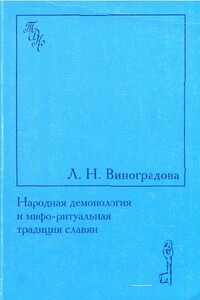
Книга посвящена «низшей» мифологии славян, т. е. народным поверьям о персонажах нечистой силы — русалках, ведьмах, домовых, о духе-любовнике и духах-прорицателях и т. п. Затрагиваются проблемы, связанные с трудностями идентификации демонологических персонажей и с разработкой методов сравнительного изучения демонологии разных славянских народов. При исследовании этого важнейшего фрагмента народной культуры главным для автора остается факт включенности мифологических персонажей во все сферы бытовой и обрядовой жизни традиционного общества.
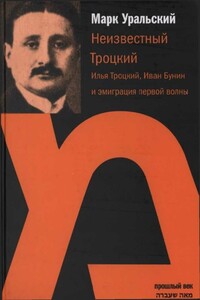
Марк Уральский — автор большого числа научно-публицистических работ и документальной прозы. Его новая книга посвящена истории жизни и литературно-общественной деятельности Ильи Марковича Троцкого (1879, Ромны — 1969, Нью-Йорк) — журналиста-«русскословца», затем эмигранта, активного деятеля ОРТ, чья личность в силу «политической неблагозвучности» фамилии долгое время оставалась в тени забвения. Между тем он является инициатором кампании за присуждение Ивану Бунину Нобелевской премии по литературе, автором многочисленных статей, представляющих сегодня ценнейшее собрание документов по истории Серебряного века и русской эмиграции «первой волны».
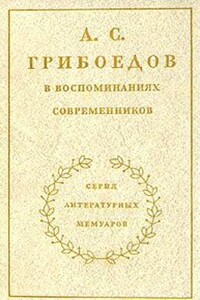
В сборник вошли наиболее значительные и достоверные воспоминания о великом русском писателе А. С. Грибоедове: С. Бегичева, П. Вяземского, А. Бестужева, В. Кюхельбекера, П. Каратыгина, рассказы друзей Грибоедова, собранные Д. Смирновым, и др.
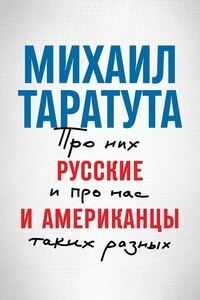
Эта книга о том, что делает нас русскими, а американцев – американцами. Чем мы отличаемся друг от друга в восприятии мира и себя? Как думаем и как реагируем на происходящее? И что сделало нас такими, какие мы есть? Известный журналист-международник Михаил Таратута провел в США 12 лет. Его программа «Америка с Михаилом Таратутой» во многом открывала нам эту страну. В книге автор показывает, как несходство исторических путей и культурных кодов русских и американцев определяет различия в быту, карьере, подходах к бизнесу и политике.
